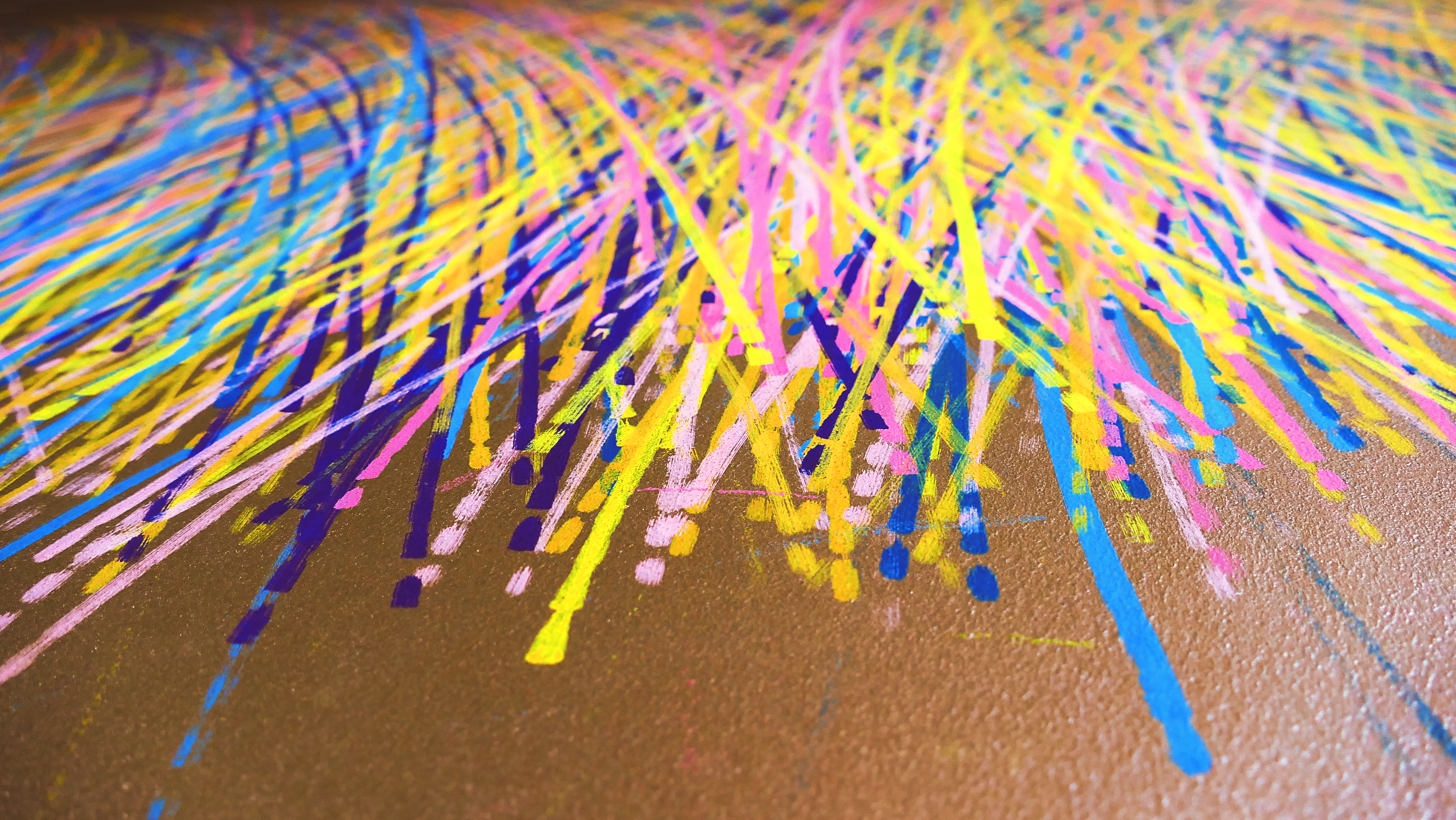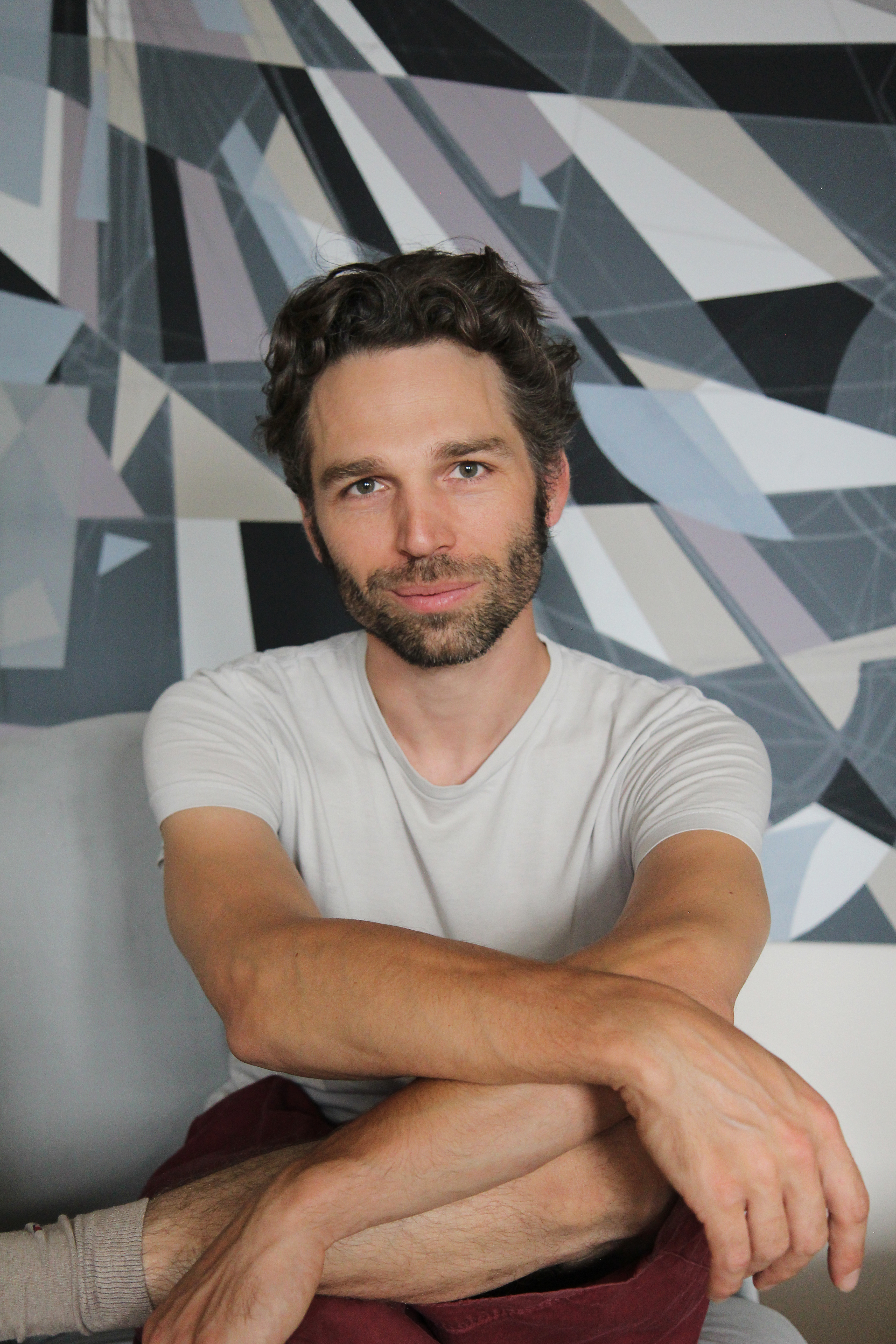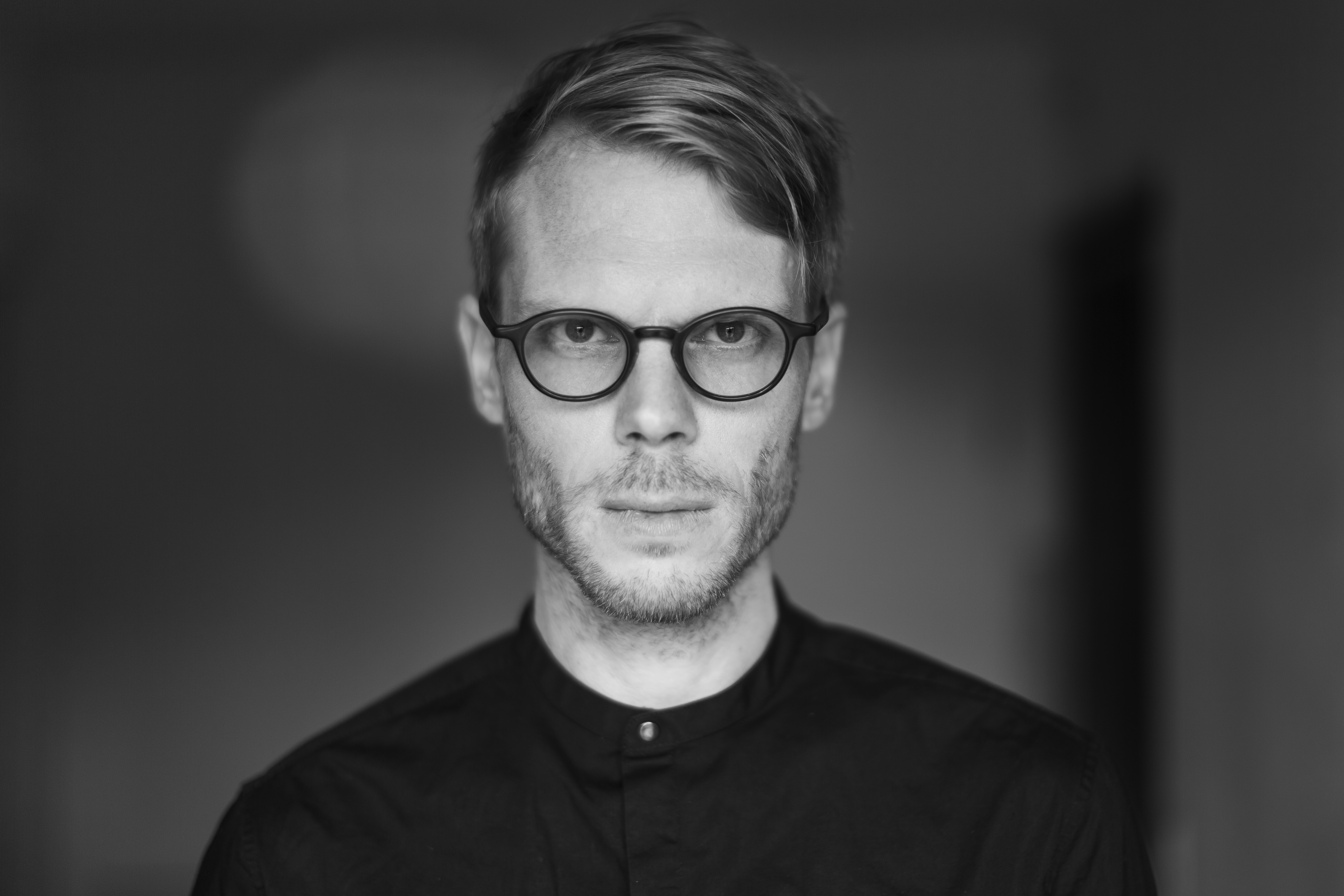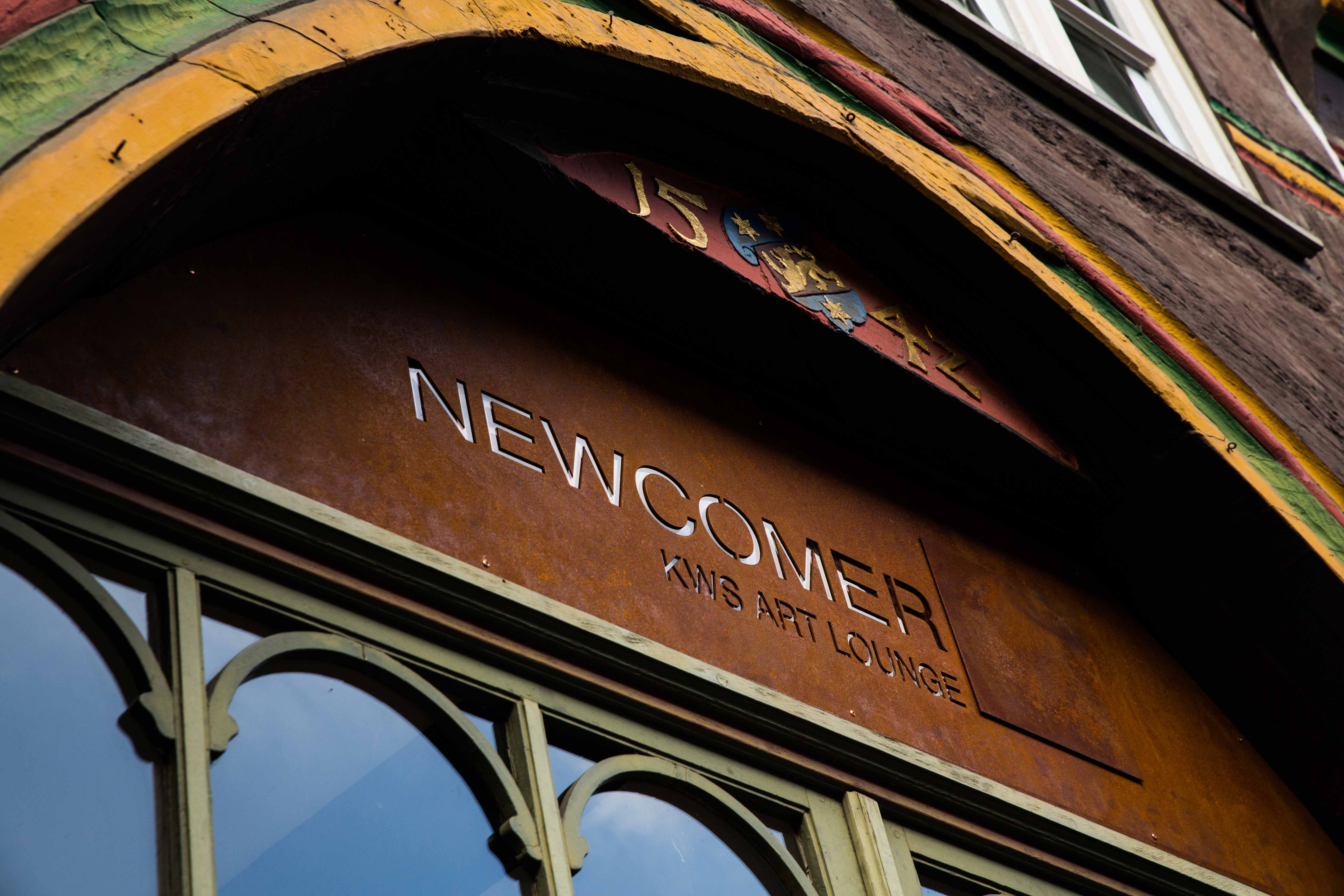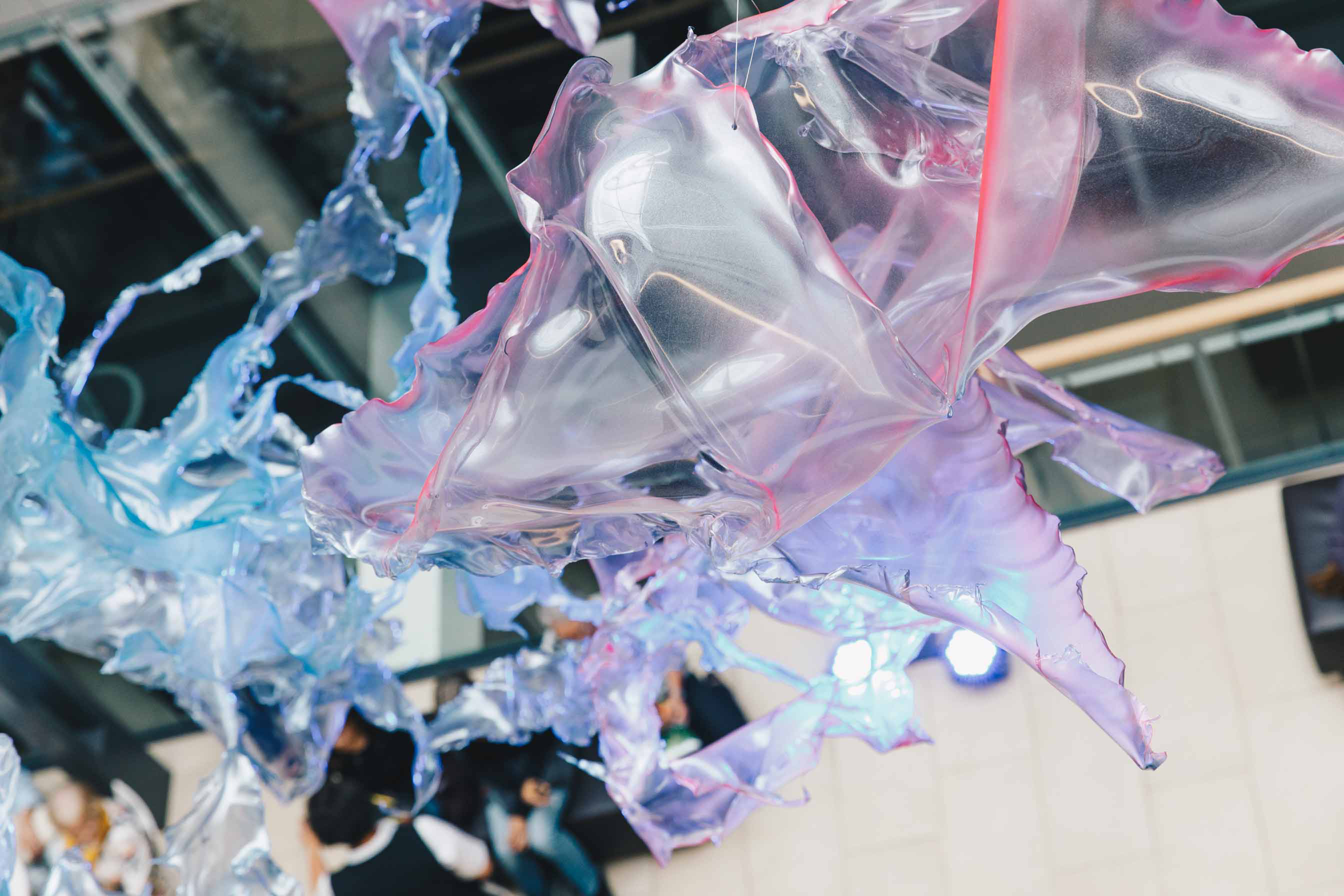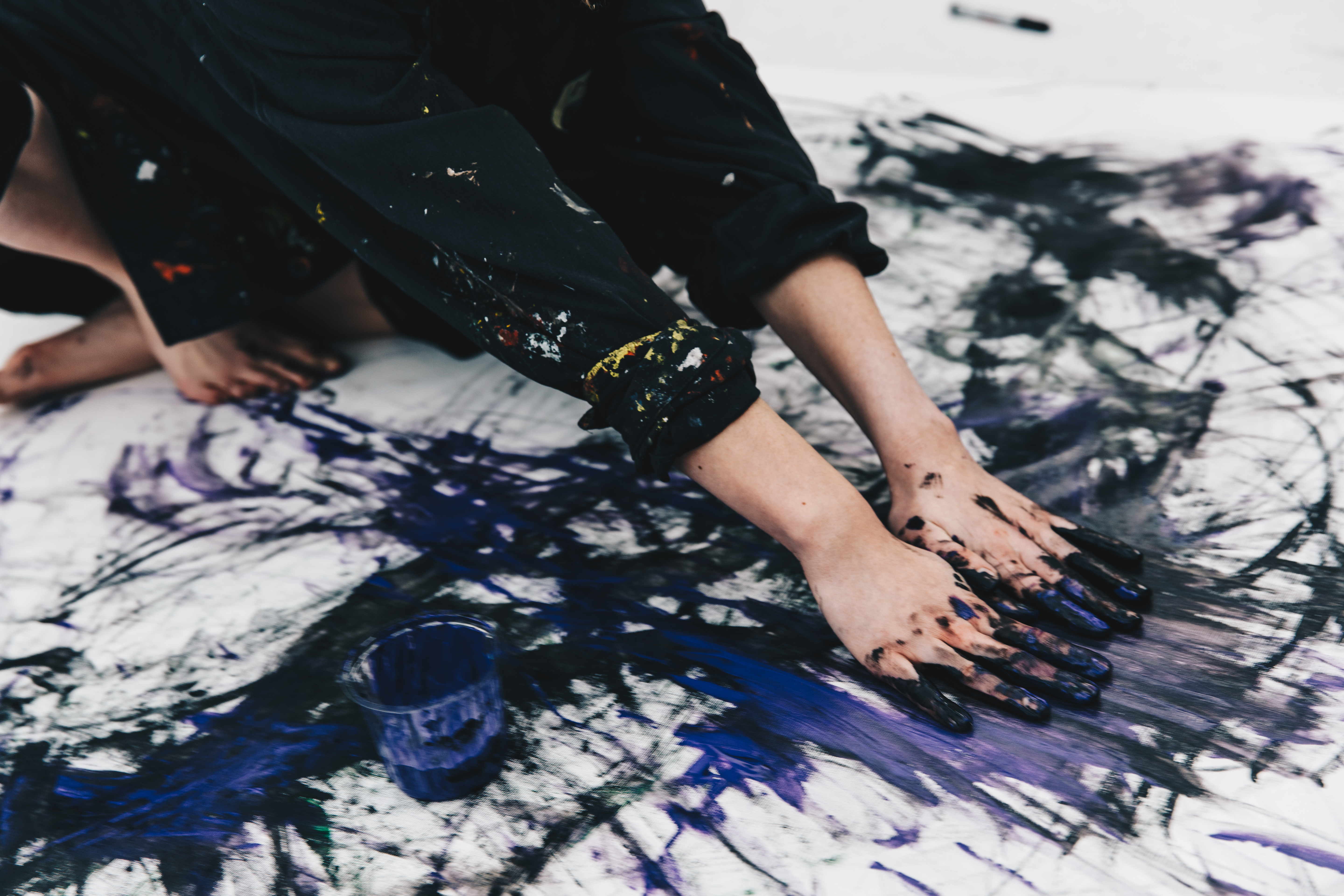Exhibition
Rising Colorspace - Michael Sebastian Haas
A new additional location was created in Berlin under the guiding motto "Urbanity meets agriculture", a modern, future-oriented working environment with KWS identity. Art plays a major role here. We will report on new works and artists on the KWS art homepage.
The art of Michael Sebastian Haas places man in relation to a machine
The communication between man and machine, i.e. the question of how one's own wishes and needs are translated into a language that the machine can understand, is a central aspect of his work.
To be able to create his art, Haas is not just an artist, he is also a scientist and researcher as well as an engineer and inventor. His mathematical "black box code" determines how behavior is designed and thus dictates the notation of the movement of his machines. The instruction manual is the actual artistic creation that enables the machine to carry out its actions independently or influenced by external stimuli and to let the work grow as if by itself.
While the formal prerequisites for the creation of art, i.e. the role of the human mastery of technology, are addressed, the finished works contain and transport the image of growth.
It is as big as a wall, so we meet it with our whole body, almost as if we could enter the painting. In front of us, a machine draws brightly colored lines in the shape of an arc on a gold grounded wall. Each of these lines begins at the bottom of the painting and rises like a culm until it reaches the highest point of its curve.
This shows us that this principle is both strict and rich in variations.
- Michael S. Haas
"Rising Colorspace" is a kinetic painting that happens before our eyes
Due to its own formal aesthetics, Haas' machine art possesses a complexity of horizons of meaning and possible focal points. Depending on the context, the creation of the paintings initially resembles either the orchestrated performance of a concert, in which the art is created autonomously by the machine, or the process of painting is directly guided by human interaction, and the artists lets others participate in the creative process. In either case, art allows its own period of creation and the sequence of movements of its production to become visible to everyone and shows the audience how it grows.
Realized as a wall painting, the large painting itself is in the special focus. This is less about staging the machine in its action or interacting with it. The central aspects of the work are the wall which is to be designed and the finished painting on it. Michael Sebastian Haas' machine-produced paintings always refer to their surroundings and are adapted by the artist to the respective spatial conditions and the context of the installation.
Its visual effect is that of a garden/field which we encounter in a new light every day. We observe it growing and blossoming, in its changes. This botanical network of lines is woven and deepened in rich colors. Every day it modulates and overwrites itself. The golden ground on which the pictorial events take place defines the framework of a fertile situation that is full of light and free. The seven colors are applied cyclically alternating according to a color protocol. This is a matte, highly pigmented acrylic paint that seems to stand slightly in front of the wall due to the lateral incidence of light.
- Michael S. Haas
The spatial staging of the wall painting in the KWS Kontor does not conceal the architectural features of the building. The technical installations on the ceiling of the room are not ignored or faded out, but are consciously integrated by the artist into the presentation of the painting. Although the work reacts to the space, seemingly withdrawing, it stands out prominently and appears as an independent painting. The artist has achieved this by placing a separate wall in front of the actual wall of the room, just for the painting. The wall frames the central painting with its glossy white wall paint and lends the individual color strokes a plasticity. They appear as if they were floating in front of the wall.
Haas' work manages to universally visualize a basic idea. Completely independent of origin, education and cultural imprint of the viewer, the paintings transport concrete images which, although they evoke very personal associations depending on one's own homeland and socialization, always refer to the same abstract motif, which finds a fixed and self-contained form in art. Man, his use of technology and the interplay of chance and control thus find their own individual and natural expression in the art of Michael Sebastian Haas.
This text was written by Johann Brandes, freelance curator and art historian in Hannover.
The artist Michael Haas chose a growth algorithm to create the artwork for KWS on site. Growth plays a major role for KWS. We create the basis for growth - plants are created and grow through our product seed. A very successful work of art that fits both the city of Berlin and KWS.
- Peter Hofmann, Executive Board member
Rising Colorspace - Michael Sebastian Haas
Online only starting from 17th September 2020
KWS Kontor
Bülowstraße 78, 10783 Berlin
About the artists
Michael Sebastian Haas & Johann Brandes
Michael Sebastian Haas
Michael Sebastian Haas found impulse and knowledge to perform his arts at the university of media art and design in Karlsruhe, Germany. Philosophy, Architecture, Scenography and Design became his multidisciplinary studies which he finished in 2007 with a "cum laude" degree in Productdesign.
The idea of an universal access to arts motivates him to hold lectures and workshops academically and educationally. MSH is a conceptual artist. He freely combines the most different media. Robotics, painting, photography, architecture and textiles merge to one when he´s giving life to his "artisitic systems".
Johann Brandes
He (*1983 in Hannover) studied Art History, Economic and Social History as well as American Studies in Göttingen, lives and works as an art historian, freelance curator and art mediator in Hannover. In addition to advising and supporting private collections, he is a Studio Assistant to Tomislav Topic / QUINTESSENZ. Furthermore, he is a founding member of C28 | Kunstraum and runs metavier | Galerie vom Anfang und Ende.
In his curatorial work, he focuses on the border areas of art and the relationship between the art business and the enlightened knowledge society.
Discover more
Your contact

